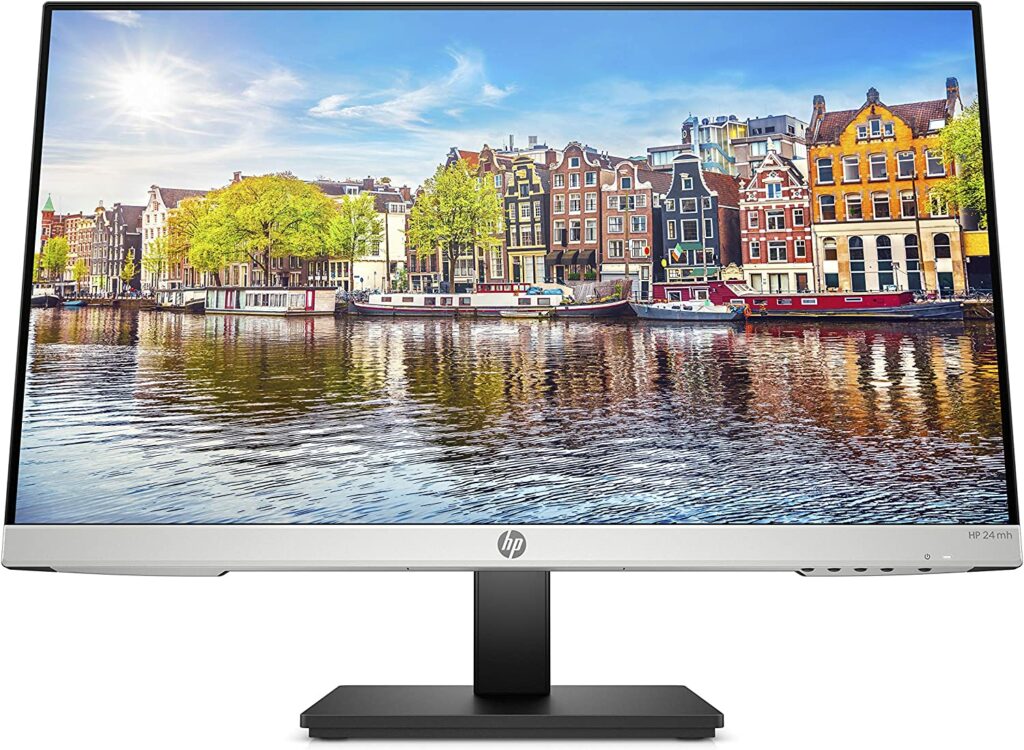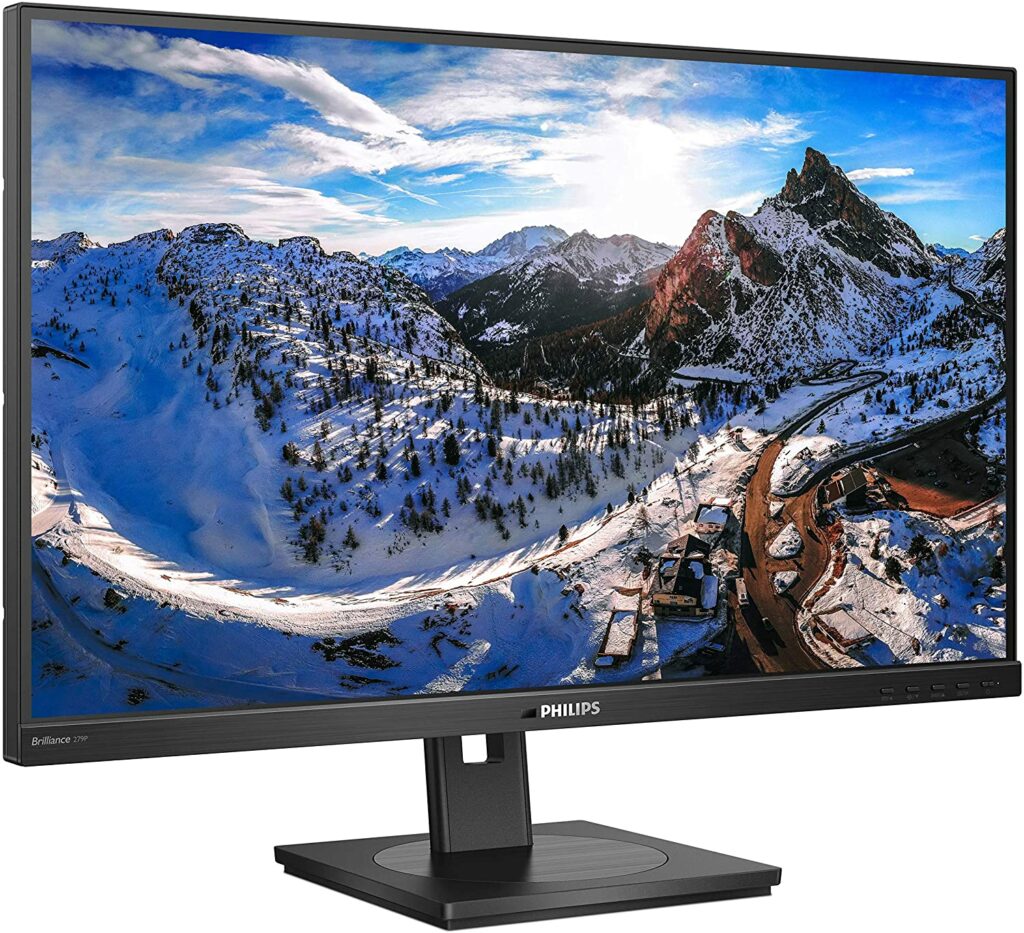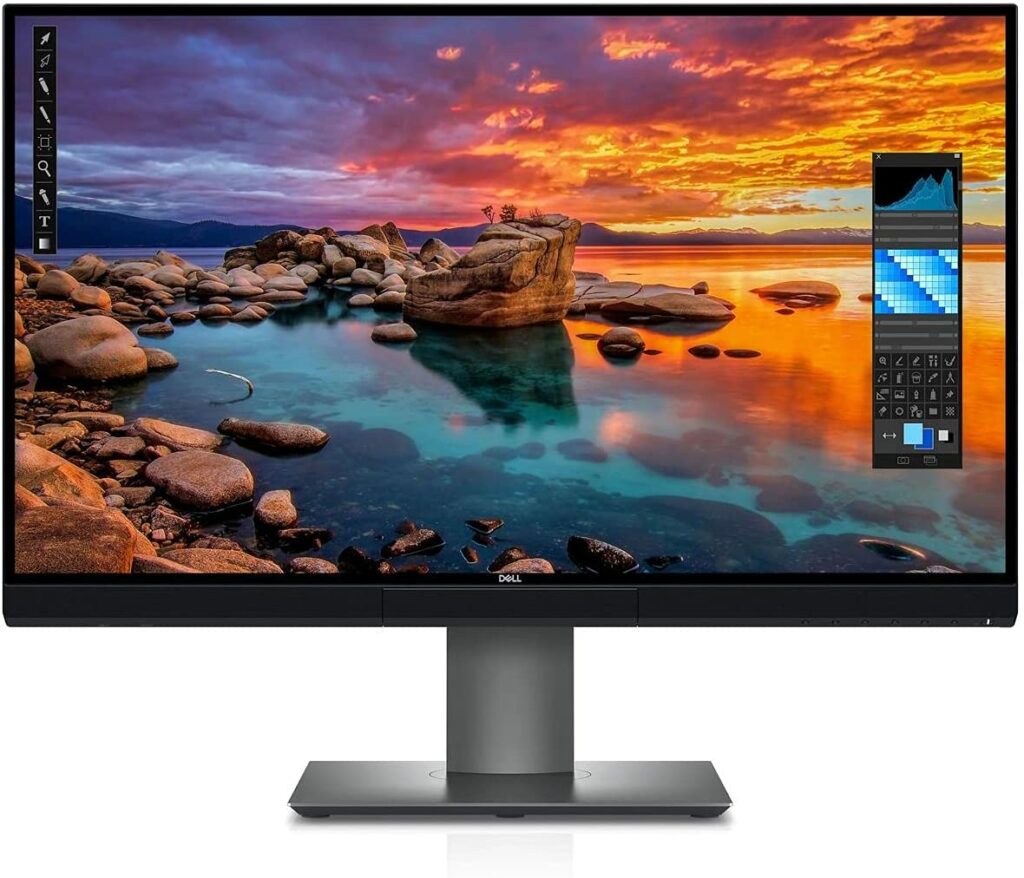You likely spend hours in front of your computer monitor every day. So if you are looking to replace your old monitor or get a new one, this guide is for you.
Whether you use a monitor for gaming, watching movies, or doing work, you must choose the right display. This choice will help you do your desired task better and fit your requirements perfectly.
Unfortunately, it is hard to select a model when you have so many endless options available. This guide aims to solve this problem by highlighting specific factors you can consider to make an informed choice. Also included in it are some of the best options you have.
Factors to Consider
Several factors determine which computer monitor is right for you. You can consider these factors to shortlist the most suitable models and then choose one that fits your budget, needs, and requirements perfectly.
- Compatible with major cable internet providers including Xfinity, Spectrum, Cox and more. NOT compatible...
- [Compatibility] 12V Power Supply Adapter Compatible with Netgear, Linksys, Asus,Motorola, Motorola/Arris...
Screen Size
A key consideration when buying a computer monitor is screen size. You have plenty of options here. Monitors ranging from 20 inches to up to 50 inches are available on the market.
The right size for you will depend on your intended use. Most gaming monitors and productivity displays sit somewhere between 23 inches and 30 inches.
A larger display offers more details, a better multitasking interface, improved color clarity, and a more immersive experience. On the flip side, larger units cost more, and you may need to adjust screen level and seating accordingly. For models above 30 inches, you may also struggle to find video input sources that cater to the native resolution of the monitor.
Intended Use
Your intended use will largely determine which computer monitor is right for you. If you are looking for everyday multimedia use, a budget-friendly mid-range monitor may be more suitable. If you engage in high-end gaming often, a more robust and feature-rich monitor may be required.
Most computer monitors are designed around intended use. You will find gaming monitors, productivity and home-office displays, creative models, and more. Some of the top-trending models from these categories are listed in the next section of this guide.
When buying a monitor, you must carefully assess your own needs and requirements. Do you plan to play graphics-heavy games on the unit? Do you also want to use it for work purposes? Will there be multiple viewers so that the monitor should support a wider view? These are all considerations that will determine your choice.
Resolution
The resolution of a computer monitor is one of the most common metrics used in assessing its performance. Most monitors come with a 1920 x 1080 resolution, also known as full HD or 1080p resolution.
Others offer a higher resolution known as Ultra HD or 4K. Higher resolution means more details can fit into the display of a monitor. So a unit with a higher resolution will deliver better image quality and clarity.
You will not need a resolution beyond 1080p in most cases, except when gaming or using high-end creative tools. However, the models offering higher resolution also carry a steep price tag.
Brightness
Most monitors come with a brightness level of 250 cd/m2. It suffices if you use the display in a normally-lit room. However, if you will be using the monitor in an exceptionally bright or sunlit room, you may want to go with one that offers a brightness of 300 to 350 cd/m2.
It is important to note that a higher brightness lets you view a monitor clearly in bright-light conditions, but it also has downsides. The most notable is that too much brightness can cause eye strain over time.
If your monitor will go in a dark or dimly lit room, make sure you choose a model that also offers appropriate brightness dimming options.
Refresh Rate
The refresh rate is measured in Hertz (Hz). A monitor with a 60 Hz display means that it refreshes the image on your screen 60 times per second. A higher refresh rate means that you experience less input lag. As a result, you see a more smooth picture or video.
This is particularly relevant to high-end games or heavy software such as CAD. If the display doesn’t have a high enough refresh rate, you may experience lag.
The average refresh rate across most models is 60 Hz, but you can choose from models that offer 144 Hz or even 240 Hz. You will also need other hardware components like the graphics card to support the higher refresh rate.
Viewing Angle
The viewing angle of a monitor is relevant only when you expect viewers to look at it from the side. Conventionally, a display would wash out or change colors when looked at from an angle.
Modern monitors resolve this problem by offering a wider viewing angle. However, curved displays are an exception as they have a relatively limited angle of view.
Some monitors offer as much as a 178-degree viewing angle, so you can look at them from extreme angles and still see the same display as when you sit right in front of them.
If you are going to use the monitor on your own, the viewing angle is of little concern. However, if you frequently have friends over to watch a movie or routinely play your games with a team, you may want a unit that offers a wider viewing angle.
Blue Light Filtering
Blue light reduction is a common feature in smartphones, and many computer monitors also come with it. The feature reduces the blue light emitted by a screen so that you experience a cooler display. This reduces eye strain.
If you plan to use your monitor for extended periods, such as hours on end, you should look for a model that offers blue light filtering. This will help you maintain good eye health even as you work or play games on your display.
Top 5 Best Computer Monitors
The right computer monitor for you will depend on the factors listed above. Here is a look at some of the best models for gaming, work, creative tasks, and productivity. We have included both budget-friendly and high-end models in this list.
1. HP 24mh

The HP 24mh features a 23.8-inch panel size and an aspect ratio of 16:9. It is an IPS-based monitor which comes with a very budget-friendly price tag. With a pixel refresh rate of 75Hz, this monitor offers excellent sRGB coverage and a high contrast ratio.
HP 24mh comes with three inputs, namely VGA, HDMI, and DisplayPort connectors. You can adjust the height, pivot, and tilt angle of the display with an easy-to-use ergonomic stand. It also comes with built-in two-watt speakers.
This monitor is a great general-purpose choice, especially if you are hunting for a good find under $200. A slight downside is that it comes with a one-year warranty.
At A Glance
- 23.8-inch panel
- IPS-based monitor with a high contrast ratio
- An aspect ratio of 16:9
- Excellent sRGB coverage
- Adjustable stand for ergonomic tilt, height, and pivot
- Budget-friendly with a price under $200
2. Dell 27 Curved Gaming Monitor

The Dell 27 Curved Gaming monitor is a 27-inch model with a native resolution of 1920 x 1800. It packs an aspect ratio of 16:9 and has a refresh rate of 144Hz. The VA display supports HDMI and DisplayPort video inputs.
This model offers decent gaming prowess and an excellent Nvidia G-Sync performance. You can enjoy a great gaming experience on the 1080p display.
Compared to most other gaming monitors, the Dell 27 packs a price tag that is exceptionally low at under $250. This makes it a great choice if you want to play a broad set of games without investing a tidy sum into your machine.
At A Glance
- 27-inch panel size
- Display resolution of 1920 x 1800
- 1080p gaming experience
- Price under $250
- Decent gaming performance
3. Philips Brilliance 279P1

The Phillips Brilliance 279PA is a productivity monitor meant for your workspace or home office. This model comes with a vast array of features that makes it a great fit for work.
The 27-inch IPS display packs a 4K resolution and an exceptionally high pixel density. This results in ultra-crisp images and graphics. In addition, with two HDMI ports and four USB 3.2 ports, Philips Brilliance 279P1 offers plenty of connectivity options.
An adjustable stand lets you manage the height, tilt, pivot, and swivel of this computer monitor. It also features built-in speakers.
279P1 comes with a solid four-year warranty. This should be some compensation for the relatively steep price tag of above $400. However, this model delivers more in the same price range when compared to many contemporaries.
At A Glance
- 27-inch IPS display
- Ultra HD 4K resolution
- Two HDMI ports and four USB 2.0 ports
- Adjustable height, tilt, pivot, and swivel
- Solid four-year warranty
4. Samsung LC32G75TQSNXZA

The 32-inch Samsung LC32G75TQSNXZA is a 1440p model perfect for high-end gaming needs. It comes with a refresh rate of 240Hz and supports both AMD Freesync and Nvidia G-sync. The result is a seamless gaming experience.
This model features a curved screen, making it easy for you to have a full-field view. The downside is that the viewing angles from sides are very limited.
The Samsung LC32G75TQSNXZA is designed to offer a perfectly lag-free gamers’ experience. This may justify the $500+ price tag for this model.
At A Glance
- 32-inch VA display
- 1440p native resolution
- A refresh rate of 240Hz
- Compatible with AMD Freesync and Nvidia G-sync
- Curved screen with easy field view
- Limited viewing angles from sides
Dell UltraSharp 27 4K PremierColor

The Dell UltraSharp 27 4K PremierColor is geared at creative professionals. This high-end model packs some of the most exclusive features available in computer monitors.
The 27-inch IPS display has a 4K resolution and an aspect ratio of 16:9. You get plenty of video input options with DisplayPort, USB-C, Thunderbolt 3, and HDMI ports. Another four USB ports are also available.
A cabinet houses the display itself and comes with quarter-inch bezels at the top and on the sides. This lets you prevent the lighting conditions from impacting the view on the display. In addition, the cabinet and the display are designed to be fully ergonomic, allowing for adjustment of the height, pivot, tilt, and swivel.
One of the stand-out features of this model is the ability to calibrate the monitor. You can also schedule regular calibrations to achieve a consistent monitor performance.
At A Glance
- 27-inch IPS display
- 4K resolution with an aspect ratio of 16:9
- Four USB ports
- Thunderbolt 3, HDMI, DisplayPort, and USB-C ports
- Cabinet to house the display
- Customized monitor calibrations
Conclusion
A computer monitor is one of the most important components for your everyday work, gaming, and video needs. The right monitor can help you perform these tasks more effectively and achieve better productivity. A wrong choice can make you face annoying lags, poor performance, and a decline in work throughput.
Here is a quick look at the key factors that can help you choose the right monitor.
Screen Size – Available sizes go from 20 inches up to 50 inches. Larger displays offer a higher resolution but also cost more and can be less ergonomic to use.
Intended Use – Do you plan to use the monitor for heavy software like CAD, to watch movies, play games, or do simpler computing tasks? Your intended use will determine which model is right for you.
Resolution – Most models offer 1080p resolution. Others come with a 720p or 4K resolution. A larger resolution offers more image detail and clarity.
Brightness – The average brightness is 250 cd/m2. You need a higher brightness, between 300 and 350 cd/m2, if you use the display in a bright, sunlit room.
Refresh Rate – The refresh rate determines how many times the screen image is refreshed per second. A higher refresh rate ensures a smoother image transition but also requires a more robust graphics card.
Viewing Angle – A wider viewing angle lets you view the same display from the side without losing image quality. Curved screens have a narrower viewing angle.
Blue Light Filtering – If you intend to use the monitor for hours on end, blue light filtering can help you avoid eye strain.
With these factors, you can make an informed choice and select a computer monitor that fits your requirements perfectly.





